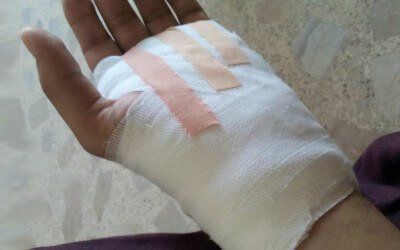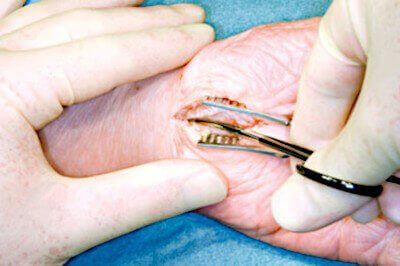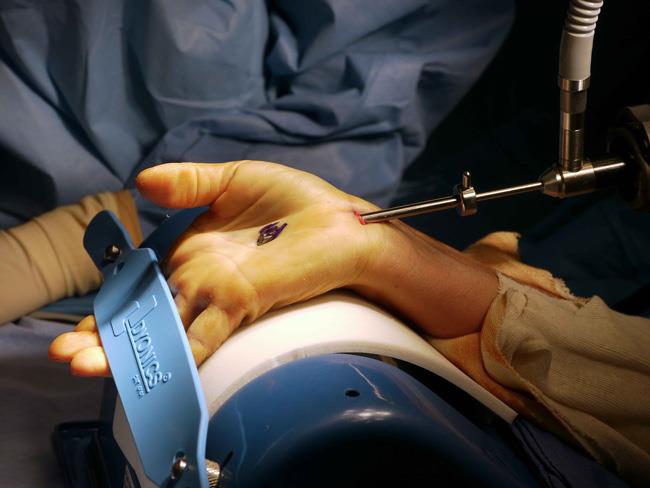Checklist: Carpal Tunnel Surgery Instructions
From Dr. Z - Carpal tunnel syndrome specialist
Checklist: Carpal Tunnel Surgery Instructions
Before your hand operation, you'll get detailed carpal tunnel surgery instructions from your doctor. Usually, it's a single sheet with important information and helpful tips. Read it carefully - even if you're just considering surgery!
And if you have any questions whatsoever, don't be afraid to ask your doctor. Questions like, "How much help will I need after surgery?" may sound simple, but there are a lot of factors to consider.
Following the written instructions is vital to restoring your hand sooner than later. Here are the key points of those instructions.
- FIND OUT: do you have carpal tunnel?
No strings attached self-test.
Your doctor's carpal tunnel surgery instructions
So, you’re having carpal tunnel surgery? I wish you complete success with a great outcome.
While there are plenty of good non-surgical options available, some people still insist on having this operation. Or perhaps your carpal tunnel doctor sees no other alternative to relieve your symptoms. In that case, have a frank discussion with the doctor to go over your operation. Ask about every detail, and be sure you're comfortable with the answers.
The doctor will explain that a fast recovery time depends on a few things. Most important of them are following the doctor's carpal tunnel surgery instructions. These are listed below. Some doctors prefer modifying these instructions. But most go in this general direction.
You'll have 1 of 2 types of surgery
Before describing the instructions you'll get, it's important to know about the method of hand surgery you'll have. This determines your aftercare and recovery time.
You will have a hand operation called carpal tunnel release surgery. All carpal tunnel release surgery is performed using one of two methods. Your carpal tunnel surgery instructions will be a little different depending on which type of surgery you have. These surgical methods are:
- Open carpal tunnel release surgery, or
- Endoscopic carpal tunnel release surgery
There are particular advantages and disadvantages of each surgical method (pros and cons). It's also your doctor's decision to use one or the other method. That's because each doctor usually specializes in only one particular method.
Open carpal tunnel release surgery
The method of open carpal tunnel release surgery requires the doctor to make a 2-3 inch long cut in your palm. The doctor then cuts the ligament holding your wrist bones together. This relieves internal pressure which helps to resolve symptoms. Then the cut is stitched closed with about a dozen sutures.
The advantage of this method is is that the doctor can clearly see all of the structures inside your wrist. That means a much less chance of cutting a vital structure like a nerve or blood vessel.
the disadvantage of open carpal tunnel release surgery is that there's more post-surgical pain. That's because of the more extensive trauma to your hand with the longer scar. There is usually a longer recovery time as well, which means it takes longer to return to work.
Endoscopic carpal tunnel release surgery
The method of endoscopic carpal tunnel release surgery requires the doctor making either one or two small holes in your palm. An endoscope and a scalpel are inserted into one or both holes. Then the ligament is cut. Each hole is closed with one or two sutures.
The advantage of this type of surgery is that there is much less hand trauma compared to the open technique. That means less post-surgical pain and a faster recovery time (plus faster return to work).
But the disadvantage is related to the small hole(s) required. The surgeon has a more restricted view of the wrist's interior. That means there is a grater chance of accidentally nicking or cutting a nerve or blood vessel. That results in complications. Also, there is a greater chance that the entire ligament isn't cut. The result is persistent pain, requiring a second operation.
Instructions about motion, elevation, and using your hand
Whichever type of surgery you have, it's very important to prevent stiffness and swelling afterward. Thus, immediately after carpal tunnel surgery try to make a full fist. Then fully straighten your fingers. Do this 10 times per hour. This helps prevent
scar tissue formation
around the median nerve. The exercise will not pull out your stitches. But the motion drives the fluid out of your fingers and thus prevents stiffness, swelling or other complications.
Also, elevate your hand after carpal tunnel surgery. This prevents any additional swelling. Keep your hand at a level higher than your heart. Doing so allows excess fluid to drain from your hand and wrist.
Furthermore, you may use your hand for light activities like eating, dressing, toileting, and personal care. You may drive after the stitches are removed. By then, you should feel strong enough to grip the steering wheel safely and without too much pain.
Instructions about your bandage
Don’t change your bandage or splint after surgery until the first post-operative visit with your doctor. Moreover, keep the bandages dry.
For instance, shower with a plastic bag over your arm and hand. And tape it securely just beneath the shoulder.
Pain medicine instructions
After surgery that was performed under local
anesthesia (or local anesthesia with sedation), it's very common to experience tingling and
numbness in your hand for 8-10 hours or even longer. This is normal.
The doctor will give you a prescription for a painkiller to take at home. Make sure you fill the prescription before the operation! Frequently, only one or two pills are needed. However, the most important way to relieve pain after hand surgery is constant elevation of your hand.
Instructions for scar management and stitches
A crucial part of your carpal tunnel surgery instructions involve managing your surgical scar. Normally the doctor removes the stitches 10-15 days after surgery. Then the doctor prescribes a program for massaging the scar.
The doctor will likely advise using vitamin E oil to briskly rub into the scar for 5 minutes, twice daily. Frequently, this oil is available in most pharmacies. In fact, you may use the oil from a vitamin E capsule.
Continue the scar massage program for at least 1 month. The scar will mature in this time. If you're not persistent with the massage and vitamin E oil, the scar will be thick & tender. But if you take care and persist with scar care, it will be thinner & less sensitive.
Scar maturation usually ends by 3 months after carpal tunnel surgery. During that time, most people feel some pain at the scar site, especially with direct pressure on the wrist. Usually the pain slowly goes away over 3-6 months.
Make sure you actually need surgery!
An influential insurance group recently publish alarming findings. Most people who get carpal tunnel surgery actually don’t need it.In other words, the surgery is unnecessary because the patients could have used non-surgical alternatives.
In fact, carpal tunnel surgery doesn’t attack the actual cause of the problem. That’s tendon inflammation. You must relieve the tendon inflammation permanently or else symptoms will come back.
Surgery simply removes pressure on the median nerve. This is only a temporary solution. And it’s the main reason carpal tunnel surgery fails half of the time. Hence, it has a relatively low success rate. Combined with the surgical risks involved. today this hand operation is considered a “last resort” by the American Academy of Orthopedic Surgeons (AAOS).
The AAOS recommends that, before considering surgery, every patient must try non-surgical remedies first. Night bracing, stretching exercises, and myofascial release massage are examples that work exceptionally well to restore your hand.
Summary
Your carpal tunnel surgery instructions should be followed closely. Most of what you can and cannot do depends on whether you had open release or endoscopic carpal tunnel release surgery. In either case, you must manage the pain according to your doctor’s recommendations. You cannot use your hand for the first couple days. Therefore, make sure your accommodations at home take this into account.








